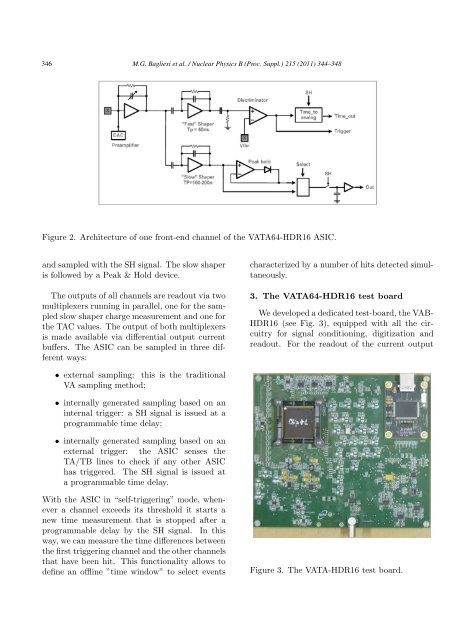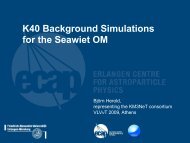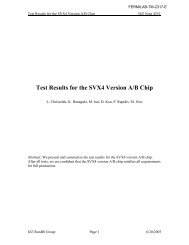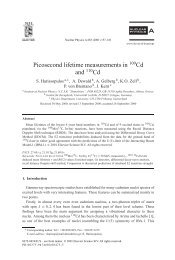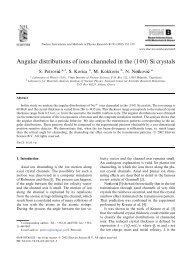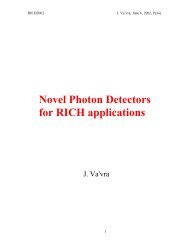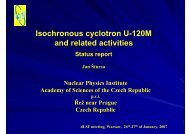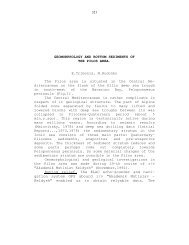A custom front-end ASIC for the readout and timing of 64 SiPM ...
A custom front-end ASIC for the readout and timing of 64 SiPM ...
A custom front-end ASIC for the readout and timing of 64 SiPM ...
You also want an ePaper? Increase the reach of your titles
YUMPU automatically turns print PDFs into web optimized ePapers that Google loves.
346<br />
M.G. Bagliesi et al. / Nuclear Physics B (Proc. Suppl.) 215 (2011) 344–348<br />
Figure 2. Architecture <strong>of</strong> one <strong>front</strong>-<strong>end</strong> channel <strong>of</strong> <strong>the</strong> VATA<strong>64</strong>-HDR16 <strong>ASIC</strong>.<br />
<strong>and</strong> sampled with <strong>the</strong> SH signal. The slow shaper<br />
is followed by a Peak & Hold device.<br />
The outputs <strong>of</strong> all channels are <strong>readout</strong> via two<br />
multiplexers running in parallel, one <strong>for</strong> <strong>the</strong> sampled<br />
slow shaper charge measurement <strong>and</strong> one <strong>for</strong><br />
<strong>the</strong> TAC values. The output <strong>of</strong> both multiplexers<br />
is made available via differential output current<br />
buffers. The <strong>ASIC</strong> can be sampled in three different<br />
ways:<br />
characterized by a number <strong>of</strong> hits detected simultaneously.<br />
3. The VATA<strong>64</strong>-HDR16 test board<br />
We developed a dedicated test-board, <strong>the</strong> VAB-<br />
HDR16 (see Fig. 3), equipped with all <strong>the</strong> circuitry<br />
<strong>for</strong> signal conditioning, digitization <strong>and</strong><br />
<strong>readout</strong>. For <strong>the</strong> <strong>readout</strong> <strong>of</strong> <strong>the</strong> current output<br />
• external sampling: this is <strong>the</strong> traditional<br />
VA sampling method;<br />
• internally generated sampling based on an<br />
internal trigger: a SH signal is issued at a<br />
programmable time delay;<br />
• internally generated sampling based on an<br />
external trigger: <strong>the</strong> <strong>ASIC</strong> senses <strong>the</strong><br />
TA/TB lines to check if any o<strong>the</strong>r <strong>ASIC</strong><br />
has triggered. The SH signal is issued at<br />
a programmable time delay.<br />
With <strong>the</strong> <strong>ASIC</strong> in “self-triggering” mode, whenever<br />
a channel exceeds its threshold it starts a<br />
new time measurement that is stopped after a<br />
programmable delay by <strong>the</strong> SH signal. In this<br />
way, we can measure <strong>the</strong> time differences between<br />
<strong>the</strong> first triggering channel <strong>and</strong> <strong>the</strong> o<strong>the</strong>r channels<br />
that have been hit. This functionality allows to<br />
define an <strong>of</strong>fline ”time window” to select events<br />
Figure 3. The VATA-HDR16 test board.


